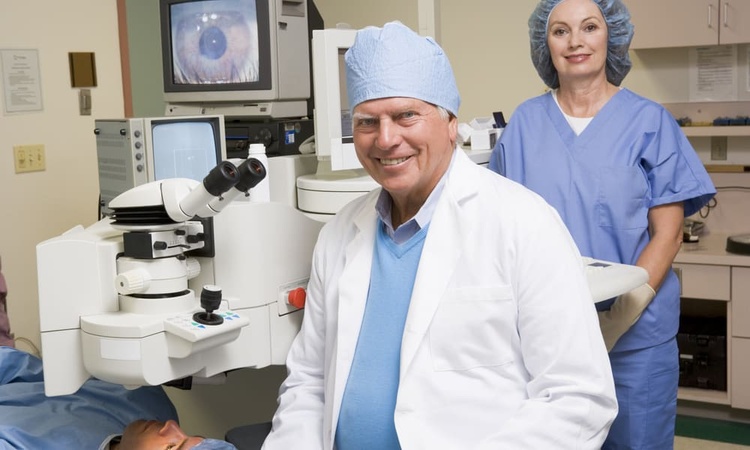The Science Behind Hair Transplant Trials: What You Need to Know
Hair transplant trials represent the cutting edge of modern hair restoration science, offering hope to millions experiencing hair loss worldwide. These clinical studies test innovative techniques, technologies, and treatments that could revolutionize how we approach hair restoration in the coming years. Understanding the science behind these trials helps patients make informed decisions about their hair health journey while staying informed about the latest developments in this rapidly evolving field.

How Hair Transplant Trials Are Conducted
Hair transplant trials follow rigorous scientific protocols designed to ensure patient safety and treatment efficacy. Researchers typically recruit participants with specific types of hair loss, such as androgenetic alopecia or pattern baldness, to create controlled study groups. These trials often compare new techniques against established methods like Follicular Unit Extraction (FUE) or Follicular Unit Transplantation (FUT).
The trial process usually involves multiple phases, starting with small safety studies and progressing to larger efficacy trials. Participants undergo comprehensive evaluations including scalp analysis, hair density measurements, and photographic documentation. Follow-up periods can extend from six months to several years, allowing researchers to assess long-term results and potential complications.
Current Hair Restoration Research Developments
Modern hair restoration research focuses on several promising areas that could transform treatment outcomes. Stem cell therapy represents one of the most exciting frontiers, with researchers exploring how to activate dormant hair follicles using platelet-rich plasma and growth factors. Studies are investigating whether combining traditional hair transplant procedures with regenerative medicine can improve graft survival and accelerate healing.
Robotic-assisted hair transplantation is another area seeing significant advancement through clinical trials. These studies evaluate how artificial intelligence and precision robotics can improve graft harvesting accuracy and reduce human error. Additionally, researchers are exploring new preservation solutions that could extend the viability of harvested follicles, potentially improving transplant success rates.
Innovative Hair Transplant Procedures in Development
Several revolutionary hair transplant procedures are currently undergoing clinical evaluation. Hair cloning, also known as hair multiplication, involves extracting a small number of follicles and multiplying them in laboratory conditions before reimplantation. While still experimental, early trials show promising results for creating unlimited donor hair supplies.
Scalp micropigmentation enhancement techniques are being studied to improve the appearance of transplanted areas. These procedures involve tattooing techniques that create the illusion of fuller hair density between transplanted follicles. Non-invasive hair restoration methods, including low-level laser therapy and electromagnetic field treatments, are also being evaluated for their ability to stimulate natural hair growth.
Latest Hair Transplant Advancements from Clinical Studies
Recent clinical studies have yielded several breakthrough hair transplant advancements that are beginning to enter mainstream practice. Advanced imaging technologies now allow surgeons to visualize follicle quality and orientation before extraction, significantly improving graft survival rates. Studies have demonstrated that these imaging techniques can increase successful transplantation by up to 20 percent.
Cryopreservation techniques for hair follicles have shown remarkable progress in recent trials. These methods allow surgeons to preserve harvested grafts for extended periods, enabling more complex procedures and reducing time pressure during surgery. Additionally, new anesthesia protocols developed through clinical trials have significantly reduced patient discomfort during and after procedures.
Impact on Overall Hair Health and Patient Outcomes
Hair transplant trials are not only advancing surgical techniques but also contributing to our understanding of overall hair health. Research has revealed important connections between nutrition, hormonal balance, and transplant success rates. Studies now routinely evaluate how pre-operative conditioning and post-operative care protocols affect long-term hair health outcomes.
Patient quality of life measurements have become standard components of hair transplant trials. Researchers track psychological benefits, self-esteem improvements, and social confidence changes following different treatment approaches. These comprehensive assessments help medical professionals understand the full impact of hair restoration procedures on patient well-being.
Future Directions and Expectations
The future of hair transplant trials looks increasingly promising as technology continues to advance. Artificial intelligence is being integrated into treatment planning, helping surgeons predict optimal graft placement and design natural-looking hairlines. Gene therapy approaches are entering early-stage trials, potentially offering solutions for genetic forms of hair loss.
Personalized medicine approaches are becoming more prevalent in hair transplant trials. Researchers are developing genetic testing protocols that could predict individual responses to different treatment approaches, allowing for customized treatment plans. These developments suggest that future hair restoration may be tailored to each patient’s unique genetic profile and hair loss pattern.
The science behind hair transplant trials continues to evolve rapidly, driven by technological innovation and deeper understanding of hair biology. These research efforts promise to deliver safer, more effective, and longer-lasting solutions for people experiencing hair loss. As trials progress and new treatments gain regulatory approval, patients can expect increasingly sophisticated options for addressing their hair restoration needs.
This article is for informational purposes only and should not be considered medical advice. Please consult a qualified healthcare professional for personalized guidance and treatment.




